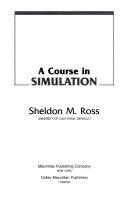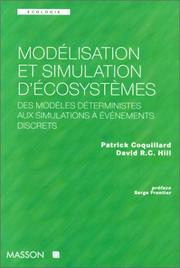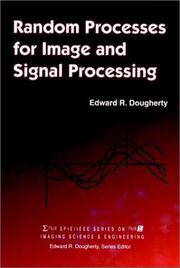| Listing 1 - 8 of 8 |
Sort by
|
Dissertation
Year: 2017 Publisher: Liège Université de Liège (ULiège)
Abstract | Keywords | Export | Availability | Bookmark
 Loading...
Loading...Choose an application
- Reference Manager
- EndNote
- RefWorks (Direct export to RefWorks)
Throughout the global financial crisis that arose in 2007–2008, very large companies and even sovereign states defaulted or were on the point of defaulting. This situation raised the vigilance of risk managers about their risk assessment. The general image about Credit Risk Agencies (CRA) has also been shaken and weakened by the crisis. A great tool to quantify the counterparty credit risk is the probability of default (PD), which has also an effect on pricing of derivatives and loans. Since a few years, the Markov chain method became a norm to estimate PD and even migration matrices. In this paper, a focus is made on long-term foreign currency credit ratings for sovereign bonds and more precisely, on the subsample containing advanced companies. An approach to implementing the Markov chain method in both discrete and continuous time is addressed. An implementation of this method and the literature about the subject permitted to conclude that the continuous time is more advantageous. Furthermore, a study of the time-homogeneity assumption is taken and showed that this assumption is a simplification and is usually wrong. The evolution of both the advanced economies and the other sovereign states through the economic cycle is also investigated. By using recession and expansion migration matrices, large differences of estimated PDs over the economic cycle were found. Also the investigation of advanced economies allowed to state that advanced companies are much less submitted to credit rating downgrades than other sovereign states.

ISBN: 0024038911 Year: 1991 Publisher: London : MacMillan,
Abstract | Keywords | Export | Availability | Bookmark
 Loading...
Loading...Choose an application
- Reference Manager
- EndNote
- RefWorks (Direct export to RefWorks)
Simulation --- Statistical methods --- Probabilite --- Nombre aleatoire --- Variable aleatoire continue --- Variance --- Donnees simulees --- Bootstrap --- Variable aleatoire discrete --- Chaine de markov --- Methode de simulation --- Probabilities --- Probabilités. --- Variables aleatoires --- Probabilités.
Book
ISBN: 0387960694 3540960694 146138544X 1461385423 Year: 1985 Volume: vol 276 Publisher: New-York Berlin Heidelberg Tokyo Springer
Abstract | Keywords | Export | Availability | Bookmark
 Loading...
Loading...Choose an application
- Reference Manager
- EndNote
- RefWorks (Direct export to RefWorks)
Biomathematics. Biometry. Biostatistics --- Statistical physics --- Stochastic processes --- Modèle mathématique --- Mathematical models --- Méthode statistique --- Statistical methods --- Wiskundige natuurkunde --- Biomathematica. --- Stochastiques (Processus) --- Physique mathématique --- Biomathématiques. --- Stochastische processen. --- Analyse mathematique --- Probabilite --- Interacting systems --- Ising models --- Spin systems --- Markov processes --- Markov chain --- Nearest-neighbour --- Chaine de markov --- Nearest particle system --- Exclusion process
Book
ISBN: 2804113892 9782804113896 Year: 1990 Publisher: Bruxelles: De Boeck-Wesmael,
Abstract | Keywords | Export | Availability | Bookmark
 Loading...
Loading...Choose an application
- Reference Manager
- EndNote
- RefWorks (Direct export to RefWorks)
Algebra --- Algèbre --- Économie --- economics --- Gestion --- management --- Social sciences --- Programmation linéaire --- Linear programming --- management. --- Economics, Mathematical --- Mathématiques économiques --- Algèbre linéaire --- Algebras, Linear --- Economics, Mathematical. --- Mathématiques économiques --- Algèbre linéaire --- Algebras, Linear. --- Algèbre --- Algebra. --- Algebre lineaire --- Chaine de markov

ISBN: 2225853630 9782225853630 Year: 1997 Volume: *29 Publisher: Paris: Masson,
Abstract | Keywords | Export | Availability | Bookmark
 Loading...
Loading...Choose an application
- Reference Manager
- EndNote
- RefWorks (Direct export to RefWorks)
Ecology --- Mathematical models --- Simulation methods --- Écosystème --- ecosystems --- Modèle --- Models --- methods --- Évaluation --- evaluation --- Biotic communities --- Computer simulation --- evaluation. --- Ecology - Mathematical models --- Ecology - Simulation methods --- Chaine de markov --- Equation de chapman-kolmogorov --- Matrice de leslie et husher --- Model sylver spring --- Simulation monte carlo
Book
ISBN: 9782880744465 9782880744595 2880744466 2880744598 Year: 2003 Publisher: Lausanne: Presses polytechniques et universitaires romandes,
Abstract | Keywords | Export | Availability | Bookmark
 Loading...
Loading...Choose an application
- Reference Manager
- EndNote
- RefWorks (Direct export to RefWorks)
Combinatorial optimization --- Linear programming --- Mathematical optimization --- Operations research --- Optimisation combinatoire --- Programmation linéaire --- Optimisation mathématique --- Recherche opérationnelle --- Chaine de Markov --- Recherche operationnelle --- Programmation linéaire --- Optimisation mathématique --- Recherche opérationnelle --- Programmation (mathématiques) --- Operations research. --- Chaines de Markov --- Programmation (mathématiques) --- Markov, Processus de
Dissertation

Year: 2022 Publisher: Liège Université de Liège (ULiège)
Abstract | Keywords | Export | Availability | Bookmark
 Loading...
Loading...Choose an application
- Reference Manager
- EndNote
- RefWorks (Direct export to RefWorks)
Ce mémoire retrace l'histoire de quelques points des probabilités jusqu’à l’axiomatique de Kolmogorov. Dans un premier temps, nous nous intéressons au problème initial qui a suscité l’intérêt de calcul des probabilités et son développement menant aux différentes approches de la probabilité. Dans un second temps, nous analysons dans quelques manuels scolaires les plus utilisés par les enseignants de mathématique en Fédération Wallonie Bruxelles la place de ces différentes approches de la probabilité et nous apporterons quelques remarques nécessaires.
Problèmes des partis --- distribution des mises --- la valeur du sort --- espérance conditionnelle --- équation de récurrence d'ordre 2 --- ruine de joueur --- approche cardinaliste --- approche fréquentiste --- approche axiomatique --- processus stochastique --- chaîne de Markov --- analyse de manuels scolaires --- Physique, chimie, mathématiques & sciences de la terre > Mathématiques

ISBN: 0819425133 0780334957 Year: 1998 Publisher: Bellingham : New York : SPIE (The International Society for Optical Engineering) ; IEEE Press (The Institute of Electrical and Electronics Engineers),
Abstract | Keywords | Export | Availability | Bookmark
 Loading...
Loading...Choose an application
- Reference Manager
- EndNote
- RefWorks (Direct export to RefWorks)
Statistical methods --- Neural networks --- 621.395.38 --- Signalling and pulsing --- Image processing: image displays; image processing software (Computing methododologies) --- 681.3*I4 Image processing: image displays; image processing software (Computing methododologies) --- 621.395.38 Signalling and pulsing --- Image processing --- Signal processing --- Stochastic processes --- 681.3*I4 --- Random processes --- Probabilities --- Pictorial data processing --- Picture processing --- Processing, Image --- Imaging systems --- Optical data processing --- Stochastic processes. --- Statistical methods. --- Traitement d'images --- Processus stochastiques --- Mathematics --- Mathématiques --- Probabilite --- Reseau --- Random function --- Canonical representation --- Chaine de markov
| Listing 1 - 8 of 8 |
Sort by
|

 Search
Search Feedback
Feedback About UniCat
About UniCat  Help
Help News
News